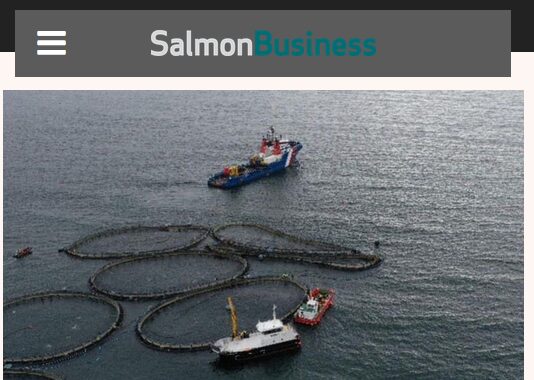 Í fyrra er áætlað að um 205.000 eldislaxar hafi sloppið úr sjókvíum við Skotland. Rétt eins og hér á landi eru alþjóðlegir sjókvíaeldisrisar skráðir í norsku kauphöllinni nánast einráðir í sjókvíaeldinu við Skotland. Þar eru líka notaðar sambærilegar sjókvíar og hér. Þetta eru netapokar sem hanga í flothringjum og hald ekki fiski betur en þetta.
Í fyrra er áætlað að um 205.000 eldislaxar hafi sloppið úr sjókvíum við Skotland. Rétt eins og hér á landi eru alþjóðlegir sjókvíaeldisrisar skráðir í norsku kauphöllinni nánast einráðir í sjókvíaeldinu við Skotland. Þar eru líka notaðar sambærilegar sjókvíar og hér. Þetta eru netapokar sem hanga í flothringjum og hald ekki fiski betur en þetta.
Hitt er svo mikilvægt að hafa í huga að stóru skrásettu sleppislysin eru ekki endilega þau skaðlegustu fyrir lífríkið. Mun illvígari er hinn stöðugi lúmski leki smálaxa úr sjókvíunum. Þeir blanda sér í villtu stofnana og ekki er hægt að greina þá nema með DNA prófum þegar þeir ganga loks í árnar. Í útliti líta þeir út eins og villtur lax en bera í erfðaefni sínu stórhættulega eiginleika sem dregur mjög úr getu villtu stofnana til að komast af í náttúrunni.
„According to figures from the Scottish Fish Farm Production Survey 2020, released last week, 205,000 Atlantic salmon were reported as escaped or likely to have escaped last year.
The annual Production Survey, published by Marine Scotland Science, details statistics on employment and production at Scottish fish farms. The figures for 2020, represent the highest number of escapees in five years.
| Year | Total tonnage | Number of Escaped fish |
| 2011 | 158,018 | 402,134 |
| 2012 | 162,223 | 34,343 |
| 2013 | 163,234 | 9,709 |
| 2014 | 179,022 | 184,613 |
| 2015 | 171,722 | 16,005 |
| 2016 | 162,817 | 311,496 |
| 2017 | 189,707 | 30,009 |
| 2018 | 156,025 | 47,726 |
| 2019 | 203,881 | 28,470 |
| 2020 | 192,129 | 205,000 |
While overall production has increased over the past ten years, the figures do not demonstrate a trend towards more escapes. Instead, they suggest that the number of escapes has more to do with individual incidents and the weather. For example, in one incident in December last year, as many as 52,000 fish were lost when seals ripped open the net at a site at Portree on Skye managed by The Scottish Salmon Company (SSC). While in August, nearly 50,000 salmon escaped when a Mowi fish farm in Argyll broke free from its moorings.
In recent years, escaped farmed salmon have been caught by anglers in multiple rivers across Loch Lomond, Ayrshire, Clyde, Argyll and in rivers in north-west England. Environmental campaigners continue to raise concerns about the escaped fish breeding with wild Scottish salmon.“
